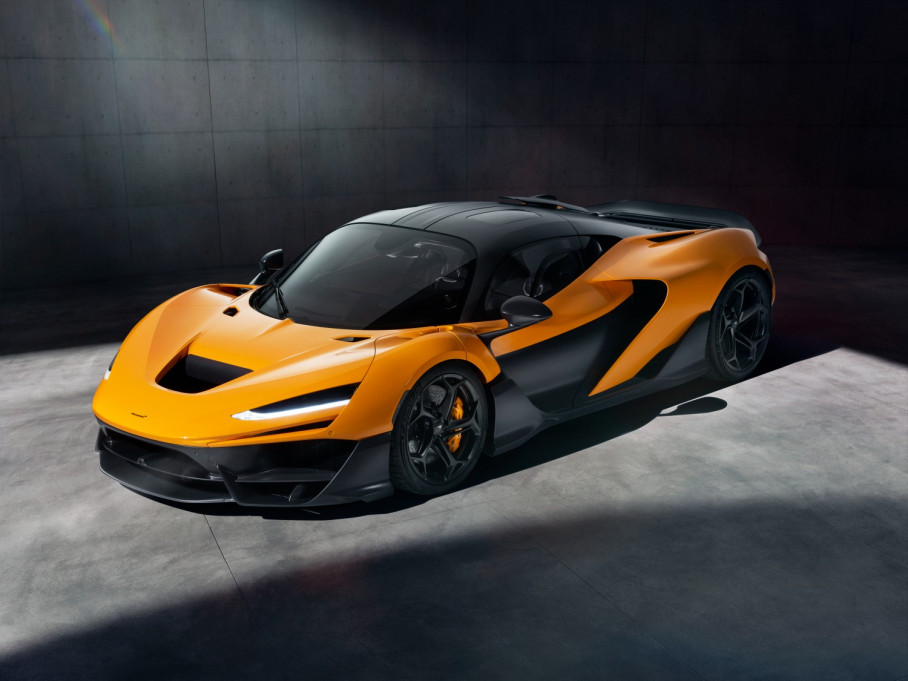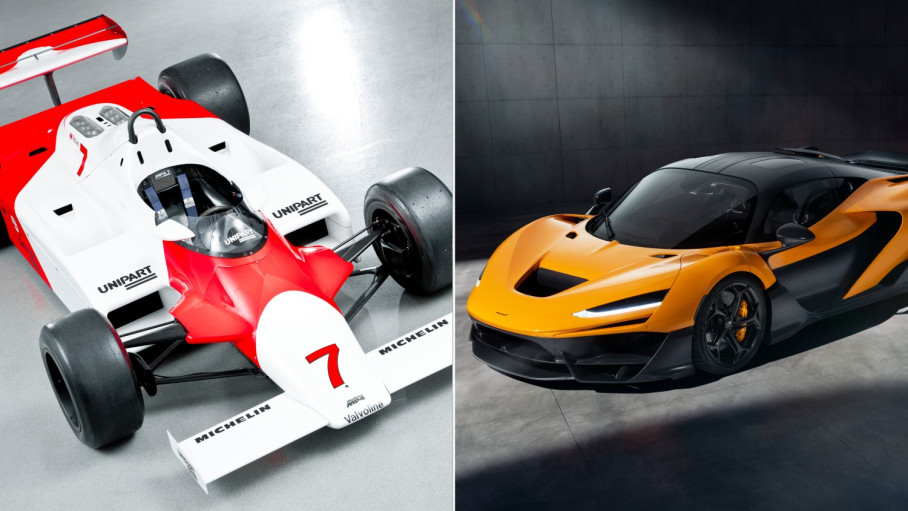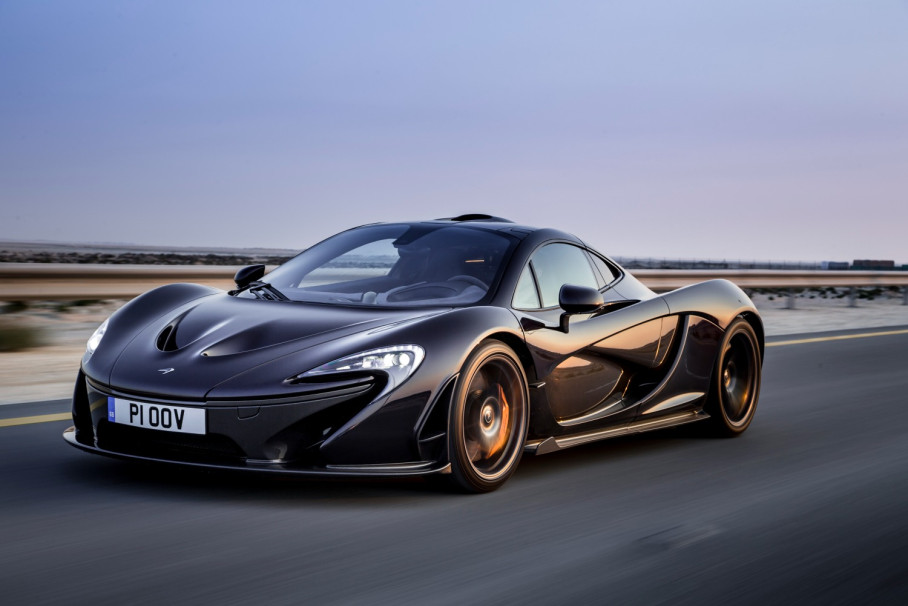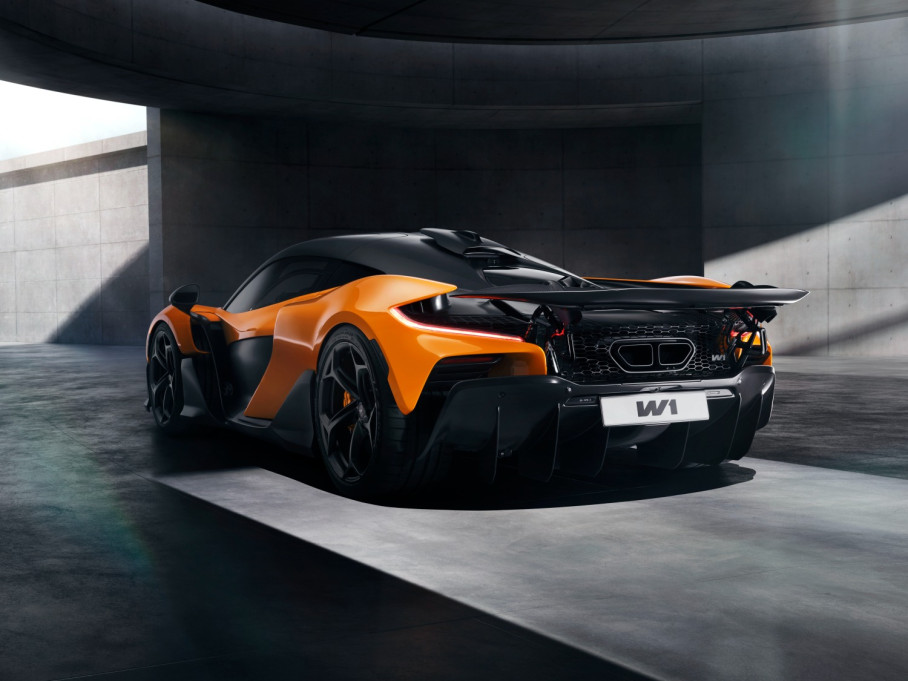







McLaren’s Carbon Fibre Heritage and DNA: From the Revolutionary MP4/1 Formula 1 Car to the New W1 Ultimate Supercar
For over 60 years, McLaren has been at the forefront of groundbreaking innovations, particularly in the field of lightweight, high-performance engineering. With deep roots in Formula 1, McLaren is uniquely positioned to push the boundaries of what’s possible in automotive technologies. One area where McLaren has consistently led is in the use of carbon fibre, a material that has become central to their identity. From the revolutionary MP4/1 Formula 1 car to the cutting-edge McLaren W1 supercar, carbon fibre has been key to McLaren’s continued success in producing some of the world's most dynamic, lightweight, and high-performing vehicles.
The Early Days: The MP4/1 and Carbon Fibre in Formula 1
McLaren’s journey with carbon fibre began with the MP4/1, launched in 1981. This was the first Formula 1 car to feature a full carbon fibre monocoque chassis, a revolutionary step that drastically improved both the safety and performance of the car. The MP4/1’s success was not only evident on the track, but its influence extended across the motorsport world. The groundbreaking use of carbon fibre led to widespread adoption in Formula 1, and by the 1981 Italian Grand Prix, the safety benefits of this material were made clear when McLaren driver John Watson survived a massive crash unharmed. This pivotal moment demonstrated the power of carbon fibre to improve both safety and performance in high-speed environments.
McLaren F1: Pioneering Carbon Fibre in Road Cars
In 1993, McLaren took its expertise in carbon fibre from the race track to the road with the McLaren F1, a supercar that would go on to define the term “ultimate driving machine.” The F1’s carbon fibre monocoque chassis and full carbon fibre body were instrumental in achieving the car’s outstanding performance. Weighing just 1,140 kg and powered by a 627-horsepower V12 engine, the McLaren F1 became the world’s fastest road car, reaching an impressive top speed of 240.1 mph. The F1 not only changed the supercar landscape, but it also helped solidify carbon fibre as the material of choice for high-performance vehicles.
The McLaren 12C and the Birth of MonoCell
Fast forward to 2011, when McLaren introduced the 12C, the first car from McLaren Automotive’s new division. The 12C introduced the MonoCell, a single-piece carbon fibre tub that offered unparalleled stiffness and lightness. This innovation set the stage for the future of McLaren’s supercar lineup, bringing carbon fibre to mass production. The MonoCell chassis weighed just 75 kg, providing exceptional torsional rigidity, and was used in the 12C's Spider variant without the need for additional reinforcement. It marked the beginning of McLaren’s modern supercar DNA, a tradition that continues to this day.
McLaren P1™: Hybrid Performance Meets Carbon Fibre
In 2013, McLaren continued to break barriers with the introduction of the P1™. The P1™ took carbon fibre technology to new heights with the use of a full carbon fibre body structure, including the roof, engine air intake cavity, and battery housing. This innovation was key to the car’s high-performance hybrid powertrain. Weighing just 90 kg, the MonoCage carbon fibre structure was crucial to the P1™’s lightweight design, proving that hybrid technology could coexist with McLaren’s commitment to low weight and performance.
McLaren 720S and the Next Step in Carbon Monocoque Technology
The 2017 McLaren 720S introduced the Monocage II, an even more advanced carbon fibre structure than its predecessors. It improved rigidity and reduced weight, providing a significant leap forward in terms of design and performance. The Monocage II structure offers unparalleled rigidity while allowing for better visibility, easier ingress and egress, and exceptional ergonomics. Like its predecessors, the 720S Spider benefited from the lightweight carbon fibre construction without additional structural reinforcement, maintaining the same incredible performance.
The McLaren Artura: Hybrid Carbon Fibre Excellence
In 2021, McLaren introduced the Artura, a supercar that combined the best of carbon fibre engineering with a next-generation hybrid powertrain. The McLaren Carbon Lightweight Architecture (MCLA) was designed to support this hybrid system while enhancing the already impressive benefits of carbon fibre. Lighter and stronger than previous chassis, the MCLA also featured a safety cell for the hybrid battery, integrating both performance and safety into the lightweight structure. The Artura Spider, like the 720S Spider before it, offered McLaren’s signature lightweight and performance advantages without compromise.
McLaren W1: The Ultimate Evolution of Carbon Fibre
The 2024 McLaren W1 marks the latest and most advanced evolution of McLaren’s carbon fibre heritage. With the introduction of the Aerocell, McLaren’s most radical carbon fibre tub yet, the W1 pushes the boundaries of performance and lightweight engineering. The Aerocell’s design maximizes aerodynamic efficiency and structural strength while minimizing weight. The W1 also debuts McLaren ART carbon fibre, a new material produced using an Automated Rapid Tape (ART) manufacturing process. This breakthrough technology allows McLaren to create lighter, stiffer carbon fibre parts with reduced waste, helping to unlock even greater performance potential.
Conclusion: The Legacy of Carbon Fibre in McLaren’s Supercars
McLaren’s carbon fibre heritage is deeply ingrained in the DNA of the brand, from the MP4/1 Formula 1 car to the highly anticipated W1 supercar. Carbon fibre has played a crucial role in the development of McLaren’s lightweight, high-performance vehicles, helping the brand deliver unparalleled speed, agility, and safety. With innovations such as the MonoCell, MonoCage, and Aerocell, McLaren continues to lead the automotive world in carbon fibre technology, paving the way for a new era of supercars. Whether you’re searching for a used McLaren in Dubai or exploring the latest models, McLaren's legacy of carbon fibre innovation remains a driving force in the world of supercars.
Looking for a used McLaren or other premium vehicles in Dubai? Visit Auto Trader UAE at www.autotraders.ae for the latest listings and exceptional deals on used cars. Explore our range of high-performance vehicles today!